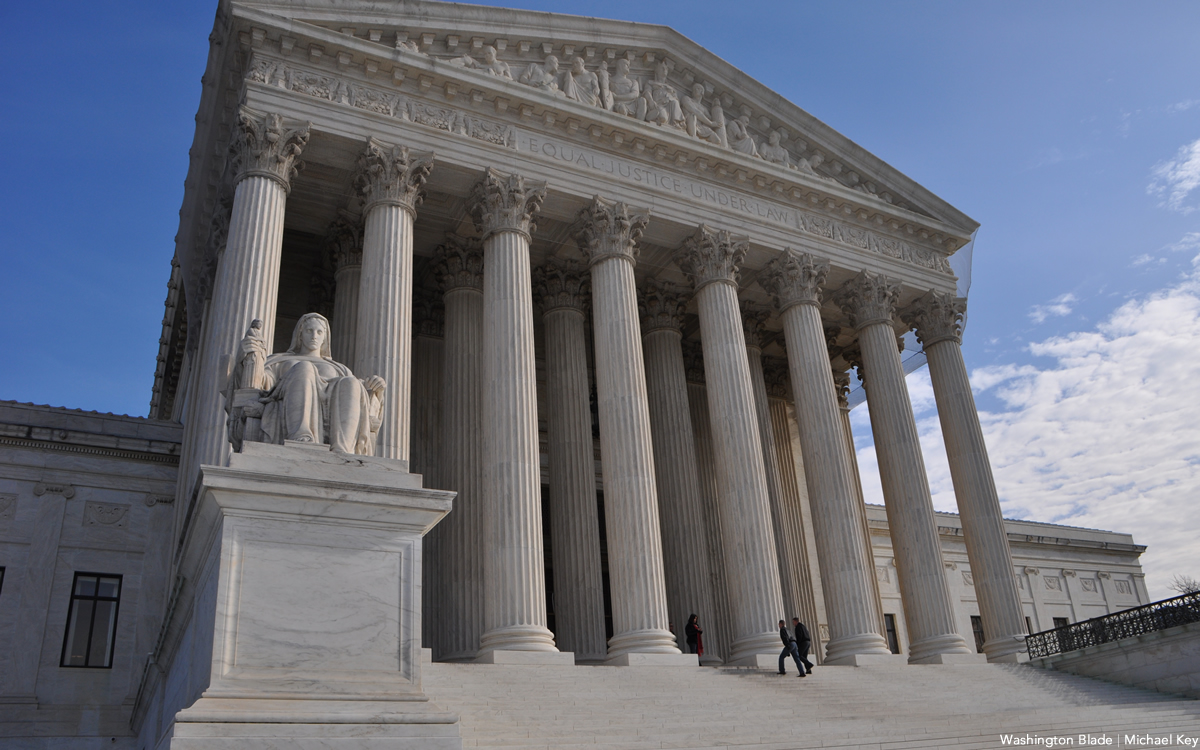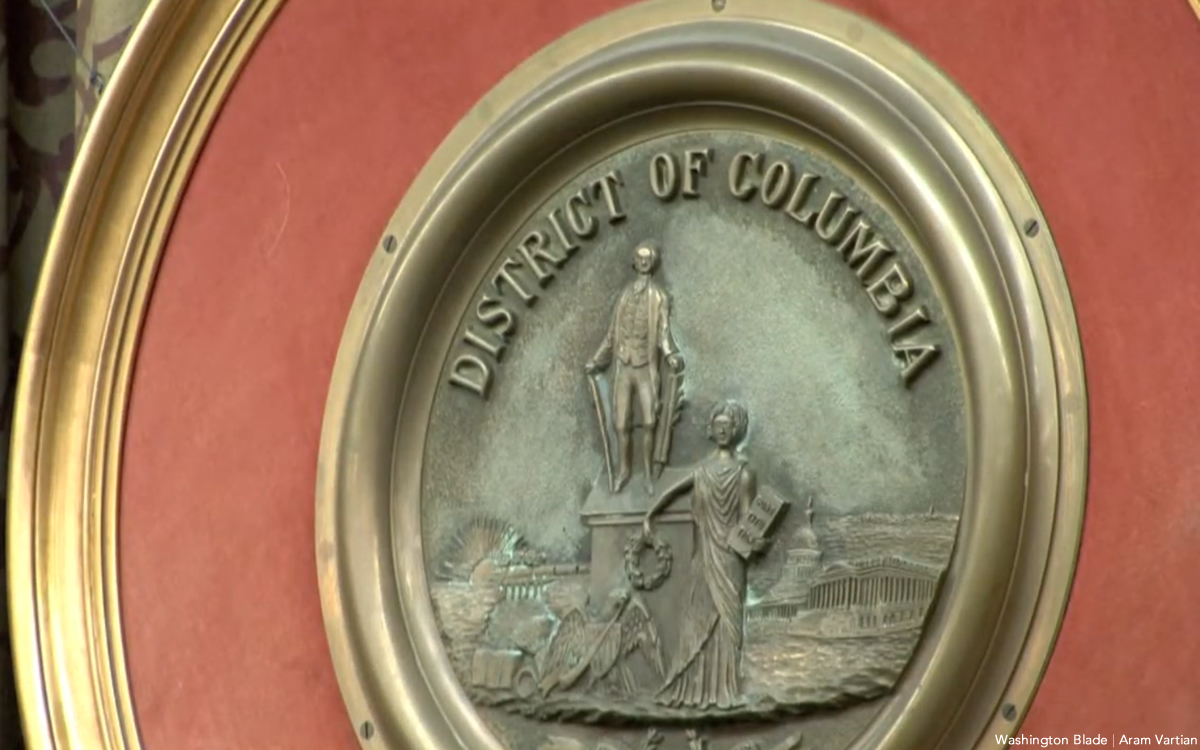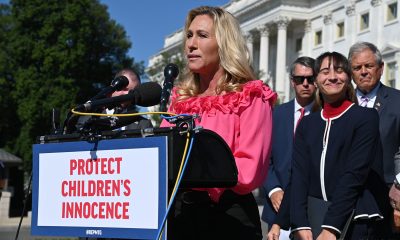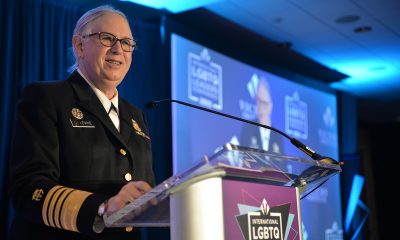Opinions
Wake up! Listen to black student protesters
Recent events at Mizzou recall a life-changing 1992 episode at Penn State

University of Missouri (Photo by AdamProcter; courtesy Wikimedia Commons)
The issue of race relations on college campuses reemerged last week following highly publicized incidents at Yale and the University of Missouri that triggered protests at schools across the country. Much of the reaction and commentary included patronizing remarks that minimized and trivialized the plight of African-American and other minority students navigating life on majority-white campuses.
At Missouri, students protested a string of racist incidents that were largely ignored by administrators, leading to the resignation of University of Missouri System President Tim Wolfe and Columbia campus Chancellor R. Bowen Loftin. They stepped down only after the football team threatened a boycott, jeopardizing lucrative sports revenue for the school. The athletes’ brave act of defiance should be a template for students elsewhere looking for creative and effective ways to fight back against apathetic administrators.
Meanwhile, at Yale, a black undergraduate student claimed that she was barred from a fraternity’s “white girls only” party. Sigma Alpha Epsilon denied the report. In another incident, a faculty member was accused of racial insensitivity after defending students’ right to wear potentially offensive Halloween costumes. The seemingly isolated incidents at Yale and Mizzou have proven anything but, with solidarity protests being staged across the country.
Leading Republican presidential candidate Donald Trump predictably sided with the status quo. “I think the two people that resigned are weak, ineffective people,” he told Fox News. Ben Carson assailed the “politically correct police” for the resignations.
Numerous publications and commentators have weighed in, belittling the students and ignoring the larger issues. This isn’t about Halloween costumes or the coddling of spoiled elites who miss their helicopter parents. It’s about the disparate treatment of minority students everywhere who face real obstacles to obtaining their education and degrees that are mostly unknown to their white counterparts.
The recent incidents call to mind my own eye-opening experience with race issues as a student at Penn State University in 1992, where I served as editorial page editor for the Daily Collegian student newspaper.
Back then, Penn State saw protests led by black students decrying low minority enrollment and inadequate efforts by the university to retain minority students. There were sit-ins and street demonstrations. One of my regular columnists, a black student, penned a column titled, “African Americans should not trust devilish white people.” It contained some harsh language and warnings to fellow black students to bear arms to defend themselves. “White people are irredeemable racists, who have never loved or cared about black people,” he wrote.
The column wasn’t the most profound or original take on race, but it certainly reflected the genuine fear and isolation that many black students felt on campus. One black friend told me that when traveling to campus from home, he gassed up his car in New York City and didn’t stop again until he pulled into his dorm four and a half hours later, ever fearful of having to make an unexpected stop in rural Pennsylvania along the way to State College.
The university was overwhelmingly white, with just 3.1 percent black enrollment. Many students were from small towns with zero black population. I had a roommate who had never met a black person before arriving on campus. When he saw a photo of me with my black prom date from high school, he said, “You took a black girl to prom?! What did your parents say?”
Such was the atmosphere for minority students. And so when I edited the column, I knew it would get a lot of attention on campus but I was young and naïve and had no idea the maelstrom that it would trigger. On the day it was published, I received an early morning phone call at my apartment from the newspaper office. “Kevin, you need to get down here. There are protesters picketing the office.”
When I arrived, there were two white students pacing in front of my office carrying signs bearing crosshairs that read, “White Man, Shoot Here.” It was startling but hardly a mass protest. I dismissed it as minor and went about my day. Later, I got a call from an Associated Press reporter in Harrisburg who’d heard about the protest. I explained that it was a brief demonstration by just two people. He wrote a story that moved across the AP state wire that night while I was still in the office. Our news editor flagged it for me. It read that our offices were besieged by a “wave of protests” following publication of the column. I was disappointed by the irresponsible sensationalism of the AP writer but it was only the state wire. Not a huge deal. Later that night, the story moved across the national AP wire and appeared in every major newspaper in the country the next morning. All hell broke loose.
The office phones rang incessantly. Penn State administrators denounced us in the media as a “hate publication.” Student organizations yanked their advertising. Oprah, Donahue, Sally Jesse and Geraldo called seeking interviews with the author and me. The story was covered by the New York Times, Washington Post, CNN and every media critic and major news outlet. Death threats began arriving to our offices. The author’s life was threatened in a flier distributed across campus with a rifle’s crosshairs superimposed across his photo. I received a death threat at my apartment from the Ku Klux Klan, which operated in a nearby town. The police visited my office offering protection. Alumni canceled donations to the university and administrators searched for ways to retaliate against the newspaper, which is an independent corporation unaffiliated with Penn State. Professors denounced our actions openly in classes. Collegian staffers were harassed on the streets.
Despite all the fear mongering in the media about us instigating a “race war at Penn State,” the only violence we saw came in the form of death threats against newspaper staff. It’s surreal to turn on the radio or TV and hear your name being trashed by commentators. I was labeled a “drug addict,” “racist,” “crazy” and worse. I lost a job offer because of the uproar.
All this because I’d defended a black staff member who’d written a column from a place of fear and isolation. Yes, he wrote some inflammatory things. But on a college campus, students deserve a wide berth when exploring complicated and emotional issues for the first time on their own. As former Yale University President Benno Schmidt once said, “A university ought to be the last place where people are inhibited by fear of punishment from expressing ignorance or even hate, so long as others are left free to answer.”
It was a life-changing experience and I wish every practicing journalist could walk for a day in the shoes of someone being castigated by the national media. It taught me the importance of fairness. Words matter and they can hurt when applied recklessly.
Fast-forward nearly a quarter century, and to my dismay students are still grappling with the same issues of racism and low minority enrollment and retention. Indeed, the list of grievances from University of Missouri students is strikingly similar to a list compiled by students in the 1960s. As the Huffington Post reported last week, “The 1969 list expressed concern about the ‘nonchalant attitude on the part of the university,’ saying it made it ‘a haven for comprehensive institutionalized racist and political repression.’ Those feelings were echoed by many protesters this week.”
Instead of dismissing these students’ concerns, we should listen and help. The condescending response from Trump, the Wall Street Journal editorial board and others ignores the genuine fears of students who face threats of violence and racist epithets — one of which was scrawled in human excrement at Missouri.
Often it’s the covert manifestations of racism that sting most, like the indifferent response of administrators and media critics. Or the persistent problems with retaining minority students and faculty at major universities that are instead focused on building multi-billion dollar endowments while neglecting needs of current students.
There are no easy solutions to these entrenched problems, but we’ve seen the result of propagating the status quo, from Ferguson to Baltimore and beyond. At the very least, we can listen to these students respectfully and engage with them. Football players don’t boycott games and students don’t initiate hunger strikes for kicks or attention. The problems are real. As Spike Lee implored us in his 1988 film “School Daze,” “Wake up!”
Kevin Naff is editor of the Washington Blade. Reach him at [email protected].
Opinions
New research shows coming out is still risky
A time of profound psychological vulnerability

Coming out is often celebrated as a joyful milestone – a moment of truth, pride, and liberation. For many LGBTQ+ people, that’s exactly what it becomes. But new research I co-authored, published in the journal Pediatrics this month, shows that the period surrounding a young person’s first disclosure of their sexual identity is also a time of profound psychological vulnerability. It’s a fragile window we are not adequately protecting.
Using data from a national sample of lesbian, gay, and bisexual people, our study examined what happens in the years before and after someone comes out to a family member or a straight friend. We weren’t looking at broad lifetime trends or comparing LGBTQ+ youth to heterosexual peers. Instead, we looked within each person’s life. We wanted to understand how their own suicide risk changed around the moment they first disclosed who they are.
The results were unmistakable. In the year a person came out, their likelihood of having suicidal thoughts, developing a suicide plan, or attempting suicide increased sharply. Those increases were not small. Suicide planning rose by 10 to 12 percentage points. Suicide attempts increased by 6 percentage points. And the elevated risk didn’t fade quickly. It continued in the years that followed.
I want to be very clear about what these results mean: coming out itself is not the cause of suicidality. The act of disclosure does not harm young people. What harms them is the fear of rejection, the stress of navigating relationships that suddenly feel uncertain, and the emotional fallout when people they love respond with confusion, disapproval, or hostility.
In other words, young LGBTQ+ people are not inherently vulnerable. We make them vulnerable.
And this is happening even as our culture has grown more affirming, at least on the surface. One of the most surprising findings in our study was that younger generations showed larger increases in suicide risk around coming out compared to older generations. These are young people who grew up with marriage equality, LGBTQ+ celebrities, Pride flags in classrooms, and messaging that “it gets better.”
So why are they struggling more?
I think it’s, in part, because expectations have changed. When a young person grows up hearing that their community is increasingly accepted, they may expect support from family and friends. When that support does not come, or comes with hesitation, discomfort, or mixed messages, the disappointment is often devastating. Visibility without security can intensify vulnerability.
Compounding this vulnerability is the broader political environment. Over the last several years, LGBTQ+ youth have watched adults in positions of power debate their legitimacy, restrict their rights, and question their place in schools, sports, and even their own families. While our study did not analyze political factors directly, it is impossible to separate individual experiences from a climate that routinely targets LGBTQ+ young people in legislative hearings, news cycles, and social media.
When you’re 14 or 15 years old and deciding who to tell about your identity, the world around you matters.
But the most important takeaway from our study is this: support is important. The presence, or absence of family acceptance is typically one of the strongest predictors of whether young people thrive after coming out. Research consistently shows that when parents respond with love, curiosity, and affirmation, young people experience better mental health, stronger resilience, and lower suicide risk. When families reject their children, the consequences can be life-threatening.
Support doesn’t require perfect language or expertise. It requires listening. It requires pausing before reacting out of fear or unfamiliarity. It requires recognizing that a young person coming out is not asking you to change everything about your beliefs. They’re asking you to hold them through one of the most vulnerable moments of their life.
Schools, too, have an enormous role to play. LGBTQ+-inclusive curricula, student groups, and clear protections against harassment create safer environments for disclosure.
Health care settings must also do better. Providers should routinely screen for mental health needs among LGBTQ+ youth, especially around the time of identity disclosure, and offer culturally competent care.
And as a community, we need to tell a more honest story about coming out. Yes, it can be liberating. Yes, it can be beautiful. But it can also be terrifying. Instead of pretending it’s always a rainbow-filled rite of passage, we must acknowledge its risks and surround young people with the support they deserve.
Coming out should not be a crisis moment. It should not be a turning point toward despair. If anything, it should be the beginning of a young person’s journey toward authenticity and joy.
That future is possible. But it depends on all of us – parents, educators, clinicians, policymakers, and LGBTQ+ adults ourselves – committing to make acceptance a daily practice.
Young LGBTQ+ people are watching. And in the moment they need us most, they must not fall into silence or struggle alone.
Harry Barbee, Ph.D., is an assistant professor at the Johns Hopkins Bloomberg School of Public Health. Their research and teaching focus on LGBTQ+ health, aging, and public policy.
Letter-to-the-Editor
Candidates should pledge to nominate LGBTQ judge to Supreme Court
Presidential, Senate hopefuls need to go on the record

As soon as the final votes are cast and counted and verified after the November 2026 elections are over, the 2028 presidential cycle will begin in earnest. Polls, financial aid requests, and volunteer opportunities ad infinitum will flood the public and personal media. There will be more issues than candidates in both parties. The rending of garments and mudslinging will be both interesting and maybe even amusing as citizens will watch how candidates react to each and every issue of the day.
There is one particular item that I am hoping each candidate will be asked whether in private or in public. If a Supreme Court vacancy occurs in your potential administration, will you nominate an open and qualified LGBTQ to join the remaining eight?
Other interest groups on both sides have made similar demands over the years and have had them honored. Is it not time that our voices are raised as well? There are several already sitting judges on both state and federal benches that have either been elected statewide or approved by the U.S. Senate.
Our communities are being utilized and abused on judicial menus. Enough already! Challenge each and every candidate, regardless of their party with our honest question and see if honest answers are given. By the way … no harm in asking the one-third of the U.S. Senate candidates too who will be on ballots. Looking forward to any candidate tap dancing!
Opinions
2026 elections will bring major changes to D.C. government
Mayor’s office, multiple Council seats up for grabs

Next year will be a banner year for elections in D.C. The mayor announced she will not run. Two Council members, Anita Bonds, At-large, and Brianne Nadeau, Ward 1, have announced they will not run. Waiting for Del. Norton to do the same, but even if she doesn’t, there will be a real race for that office.
So far, Robert White, Council member at-large, and Brooke Pinto, Council member Ward 2, are among a host of others, who have announced. If one of these Council members should win, there would be a special election for their seat. If Kenyon McDuffie, Council member at-large, announces for mayor as a Democrat, which he is expected to do, he will have to resign his seat on the Council as he fills one of the non-Democratic seats there. Janeese George, Ward 4 Council member, announced she is running for mayor. Should she win, there would be a special election for her seat. Another special election could happen if Trayon White, Ward 8, is convicted of his alleged crimes, when he is brought to trial in January. Both the Council chair, and attorney general, have announced they are seeking reelection, along with a host of other offices that will be on the ballot.
Many of the races could look like the one in Ward 1 where at least six people have already announced. They include three members of the LGBTQ community. It seems the current leader in that race is Jackie Reyes Yanes, a Latina activist, not a member of the LGBTQ community, who worked for Mayor Fenty as head of the Latino Affairs Office, and for Mayor Bowser as head of the Office of Community Affairs. About eight, including the two Council members, have already announced they are running for the delegate seat.
I am often asked by candidates for an endorsement. The reason being my years as a community, LGBTQ, and Democratic, activist; and my ability to endorse in my column in the Washington Blade. The only candidate I endorsed so far is Phil Mendelson, for Council chair. While he and I don’t always agree on everything, he’s a staunch supporter of the LGBTQ community, a rational person, and we need someone with a steady hand if there really are six new Council members, out of the 13.
When candidates call, they realize I am a policy wonk. My unsolicited advice to all candidates is: Do more than talk in generalities, be specific and honest as to what you think you can do, if elected. Candidates running for a legislative office, should talk about what bills they will support, and then what new ones they will introduce. What are the first three things you will focus on for your constituents, if elected. If you are running against an incumbent, what do you think you can do differently than the person you hope to replace? For any new policies and programs you propose, if there is a cost, let constituents know how you intend to pay for them. Take the time to learn the city budget, and how money is currently being spent. The more information you have at your fingertips, the smarter you sound, and voters respect that, at least many do. If you are running for mayor, you need to develop a full platform, covering all the issues the city will face, something I have helped a number of previous mayors do. The next mayor will continue to have to deal with the felon in the White House. He/she/they will have to ensure he doesn’t try to eliminate home rule. The next mayor will have to understand how to walk a similar tightrope Mayor Bowser has balanced so effectively.
Currently, the District provides lots of public money to candidates. If you decide to take it, know the details. The city makes it too easy to get. But while it is available, take advantage of it. One new variable in this election is the implementation of rank-choice voting. It will impact how you campaign. If you attack another candidate, you may not be the second, or even third, choice, of their strongest supporters.
Each candidate needs a website. Aside from asking for donations and volunteers, it should have a robust issues section, biography, endorsements, and news. One example I share with candidates is my friend Zach Wahls’s website. He is running for United States Senate from Iowa. It is a comprehensive site, easy to navigate, with concise language, and great pictures. One thing to remember is that D.C. is overwhelmingly Democratic. Chances are the winner of the Democratic primary will win the general election.
Potential candidates should read the DCBOE calendar. Petitions will be available at the Board of Elections on Jan. 23, with the primary on June 16th, and general election on Nov. 3. So, ready, set, go!
Peter Rosenstein is a longtime LGBTQ rights and Democratic Party activist.

















